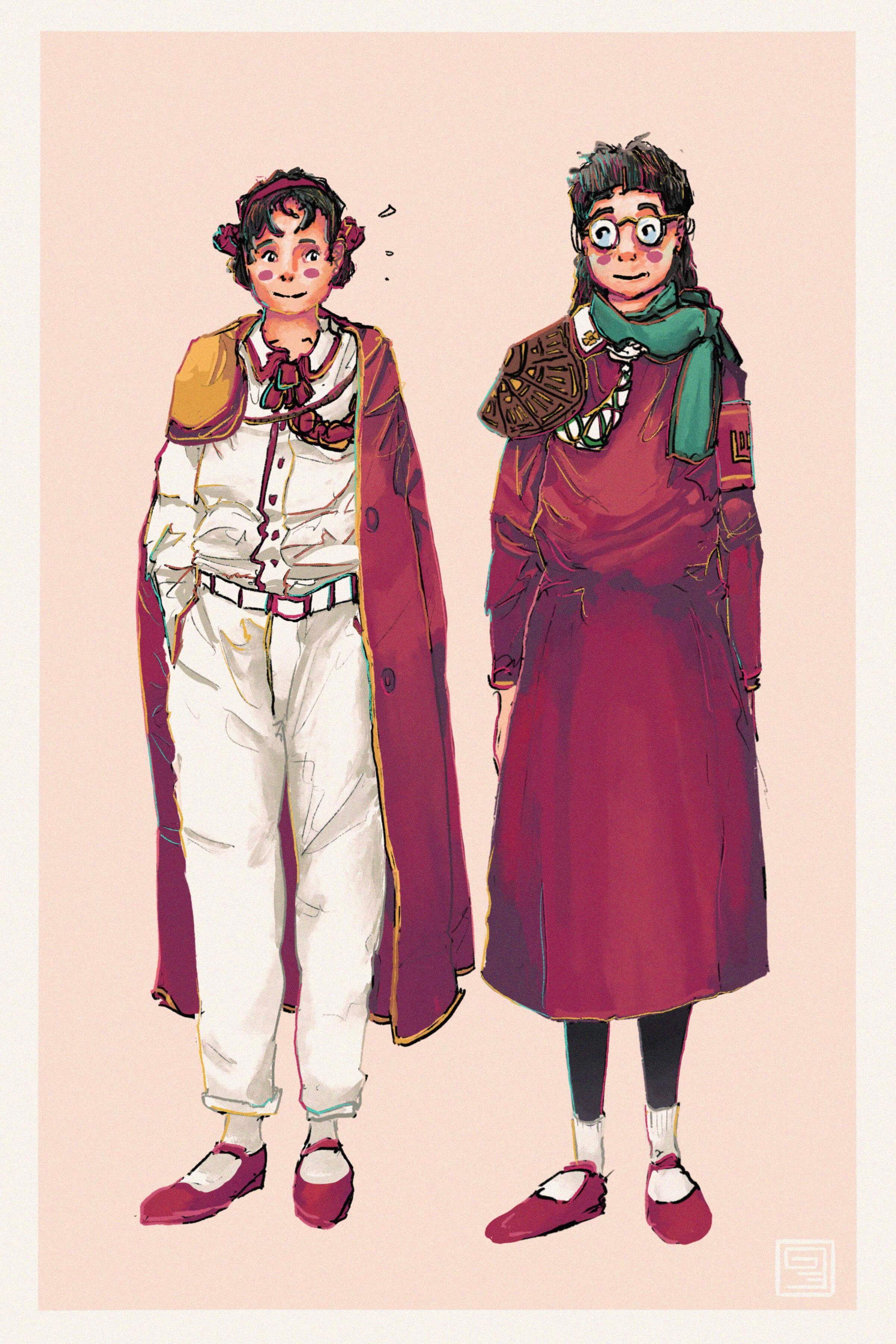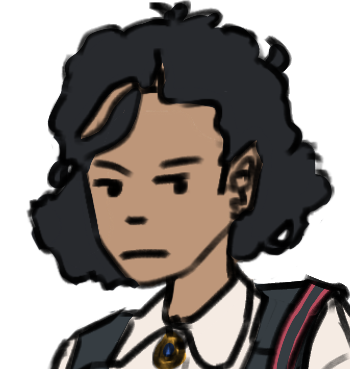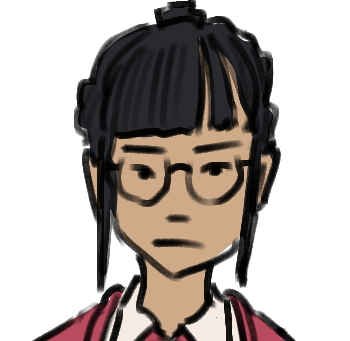NEW Story: Cocktail
Winter Uniforms in Vekllei

This article is not part of Vekllei canon. It may be old, obsolete or just a bit of fun.
✿ This article was featured in Issue #1 of the Atlantic Bulletin
When I paint Vekllei, I usually depict the warmer months. Hems are shorter, days are longer, and the destabilisation of the world’s climate has only benefited these arctic people. At the gift end of the Vekllei low pressure system, Scandinavian misery has become Mediterranean pleasure, with warm summers and a mild Autumn and Spring.
Still, by late October, the the earth is hard with cold and the days are short. The world may be warmer, but Vekllei’s polar latitude is unchanged, and in the depths of winter the sun only rises for an hour a day. These are Vekllei’s “moon months”, and they announce some of the most important spiritual festivals in Upen.
Although school hours are reduced in winter, life carries on and Vekllei fashion becomes traditionally utilitarian. Tzipora has poor circulation and cold hands even in the warm months, and by November she’s traded the skirt and gi for traditional rouisha trousers and a cloak. Rouisha, like a lot of traditional clothing, have origins in agriculture and are characterised by a loose, baggy fit and insulated lining. Cobian is wearing a heavy wool sack-type dress, which is worn like an apron over other clothing. Winter brings forth “petticoat society” literally. Note the leather plate on her shoulder, to which her christmas aiguillette is attached.
In this sense, Winter’s revival of traditional clothing and customs further evidences its practice as the most traditional season of the year. Although the warm calendar flourishes with the futurist sympathies of a modernist Vekllei, not even the atomic age has been able to dispense with its hard-worked pragmatism developed in a millennia of bitter cold.

